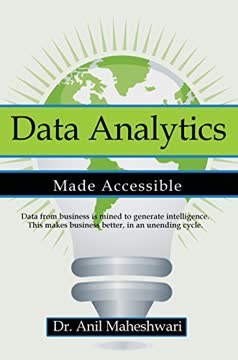Key Takeaways
1. Data Analytics: A Cycle of Continuous Improvement
Any business organization needs to continually monitor its business environment and its own performance, and then rapidly adjust its future plans.
The BIDM Cycle. Data analytics is not a one-time event but a continuous cycle. Businesses record activities, analyze the resulting data, generate insights, and then feed those insights back into the business to improve effectiveness and efficiency. This cycle, known as the Business Intelligence and Data Mining (BIDM) cycle, ensures that the business is constantly evolving and adapting to better serve customer needs.
Data-Driven Evolution. The BIDM cycle emphasizes the importance of data-based decision-making. By analyzing data, businesses can identify patterns and trends that would otherwise remain hidden. These insights can then be used to make informed decisions about product development, marketing strategies, and operational improvements.
Real-World Application. Consider a retail chain that analyzes sales data to identify fast-selling items, regional preferences, and seasonal trends. This information can then be used to optimize product placement, design targeted promotions, and improve store layouts, leading to a better-performing business. The cycle continues as the business monitors the results of these changes and makes further adjustments based on the new data.
2. Business Intelligence: Informed Decision-Making
Business intelligence is a broad set of information technology (IT) solutions that includes tools for gathering, analyzing, and reporting information to the users about performance of the organization and its environment.
IT Solutions for Insight. Business intelligence (BI) encompasses a range of IT tools and techniques designed to gather, analyze, and report information about an organization's performance and its environment. These tools help managers make better decisions by providing them with up-to-date metrics and insights. BI solutions are among the most highly prioritized solutions for investment.
Strategic and Operational Decisions. BI can improve both strategic and operational decision-making. Strategic decisions, which impact the direction of the company, can be informed by what-if analyses and data-mined patterns. Operational decisions, focused on efficiency, can be automated using data-based models.
Real-Time Adaptation. Effective BI has an evolutionary component, as business models evolve. By generating fresh insights in real-time, businesses can make better decisions and gain a significant competitive advantage. This requires a constant feedback loop where new data is analyzed, models are revised, and insights are incorporated into operating procedures.
3. Pattern Recognition: Unveiling Hidden Connections
A pattern is a design or model that helps grasp something.
Simplifying Complexity. Pattern recognition is the process of identifying designs or models that help connect seemingly unrelated things. Patterns cut through complexity and reveal simpler, understandable trends. These patterns can be temporal, spatial, or functional.
Types of Patterns.
- Temporal: Regular occurrences over time (e.g., "some people are always late").
- Spatial: Organization in a certain way (e.g., the top 20% of customers generate 80% of the business).
- Functional: Certain actions lead to certain effects (e.g., some students excel in essay questions, others in multiple-choice).
Data Mining for Patterns. Data mining is like diamond mining, digging into large amounts of raw data to discover unique, useful patterns. A skilled data miner knows what kinds of patterns to look for and understands the business domain well. A systematic approach to mining data is necessary to efficiently reveal valuable insights.
4. Data Warehousing: Centralized Data for Analysis
A data warehouse is an organized store of data from all over the organization, specially designed to help make management decisions.
Organized Data Store. A data warehouse (DW) is an organized collection of integrated, subject-oriented databases designed to support decision support functions. It provides clean, enterprise-wide data in a standardized format for reports, queries, and analysis. DW is physically and functionally separate from an operational and transactional database.
Design Considerations.
- Subject-oriented: Designed around a subject domain.
- Integrated: Includes data from many functions.
- Time-variant: Data grows at regular intervals.
- Nonvolatile: Persistent and consistently available.
- Summarized: Rolled-up data at the right level.
- Not normalized: Uses a star schema for speed.
- Metadata: Well-defined and documented elements.
Benefits of Data Warehousing. DW supports business reporting and data mining activities. It facilitates distributed access to up-to-date business knowledge, improving business efficiency and customer service. DW enables a consolidated view of corporate data, providing better and timely information.
5. Data Mining: Discovering Actionable Insights
Data Mining is the art and science of discovering useful innovative patterns from data.
Extracting Useful Patterns. Data mining is the process of extracting useful patterns from an organized collection of data. Patterns must be valid, novel, potentially useful, and understandable. The implicit assumption is that data about the past can reveal patterns of activity that can be projected into the future.
Data Mining Techniques.
- Decision Trees: Classify populations into classes.
- Regression: Find a best-fitting curve through data points.
- Artificial Neural Networks: Learn from past data and predict future values.
- Cluster Analysis: Divide data sets into clusters.
- Association Rule Mining: Look for associations between data values.
Selecting Data Mining Projects. Data mining should be done to solve high-priority, high-value problems. It requires effort to gather, clean, organize, and mine data. It is important that there be a large expected payoff from finding the insight.
6. Data Visualization: Communicating Complex Data
Data Visualization is the art and science of making data easy to understand and consume, for the end user.
Making Data Accessible. Data visualization is the art and science of making data easy to understand and consume for the end user. It involves showing the right amount of data, in the right order, in the right visual form, to convey high-priority information. The right visualization requires an understanding of the consumer’s needs, the nature of the data, and the available tools and techniques.
Types of Charts.
- Line graph: Shows data as a series of points connected by line segments.
- Scatter plot: Reveals the relationship between two variables.
- Bar graph: Shows rectangular bars with lengths proportional to values.
- Pie charts: Shows the distribution of a variable.
- Geographical Data maps: Denotes statistics on maps.
Tips for Data Visualization. Present conclusions, not just data. Choose charts wisely. Organize results to make the central point stand out. Ensure visuals accurately reflect the numbers. Make the presentation unique, imaginative, and memorable.
7. Decision Trees: Classifying and Predicting Outcomes
Decision trees are a simple way to guide one’s path to a decision.
Guiding Decisions. Decision trees are a simple way to guide one's path to a decision. They are hierarchically branched structures that help one come to a decision based on asking certain questions in a particular sequence. Decision trees are one of the most widely used techniques for classification.
Decision Tree Construction. A decision tree is constructed by asking the more important questions first and the less important questions later. The most important question is the one that gives the most insight about the situation. The variable that leads to the least number of errors should be chosen as the first node.
Benefits of Decision Trees.
- Easy to understand and use.
- Select the most relevant variables automatically.
- Tolerant of data quality issues.
- Handle non-linear relationships well.
8. Regression: Modeling Relationships and Forecasting
Regression is a well-known statistical technique to model the predictive relationship between several independent variables (DVs) and one dependent variable.
Predictive Relationships. Regression is a statistical technique to model the predictive relationship between several independent variables and one dependent variable. The objective is to find the best-fitting curve for a dependent variable in a multidimensional space. The quality of fit is measured by a coefficient of correlation.
Visualizing Relationships. A scatter plot is a simple exercise for plotting data points between two variables on a graph. It provides a visual layout of where all the data points are placed in that two-dimensional space. The scatter plot can be useful for graphically intuiting the relationship between two variables.
Regression Equation. The regression model is described as a linear equation: y = β0 + β1x + ε, where y is the dependent variable, x is the independent variable, β0 and β1 are the constant and coefficient, and ε is the random error variable. Regression models can be linear or non-linear.
9. Cluster Analysis: Segmenting Data into Groups
Cluster analysis is used for automatic identification of natural groupings of things.
Automatic Grouping. Cluster analysis is used for automatic identification of natural groupings of things. Data instances that are similar to each other are categorized into one cluster, while data instances that are very different from each other are moved into different clusters. Clustering is also known as the segmentation technique.
Applications of Cluster Analysis.
- Market Segmentation: Categorizing customers according to their similarities.
- Product portfolio: Grouping people of similar sizes for clothing items.
- Text Mining: Organizing text documents according to content similarities.
K-Means Algorithm. K-means is the most popular clustering algorithm. It iteratively computes the clusters and their centroids. It is a top-down approach to clustering. The K-means technique is a popular technique and allows the user guidance in selecting the right number (K) of clusters from the data.
10. Association Rule Mining: Uncovering Relationships
Associate rule mining is a popular, unsupervised learning technique, used in business to help identify shopping patterns.
Market Basket Analysis. Associate rule mining is a technique used in business to help identify shopping patterns. It is also known as market basket analysis. It helps find interesting relationships (affinities) between variables (items or events).
Representing Association Rules. A generic Association Rule is represented between a set X and Y: X → Y [S%, C%], where X and Y are products or services, S is support, and C is confidence. Support is how often X and Y go together, and confidence is how often Y is found, given X.
Apriori Algorithm. This is the most popular algorithm used for association rule mining. The objective is to find subsets that are common to at least a minimum number of the itemsets. A frequent itemset is an itemset whose support is greater than or equal to minimum support threshold.
11. Text Mining: Extracting Knowledge from Text
Text mining is the art and science of discovering knowledge, insights and patterns from an organized collection of textual databases.
Discovering Insights. Text mining is the process of discovering knowledge, insights, and patterns from an organized collection of textual databases. It can help with frequency analysis of important terms and their semantic relationships. Text mining can be applied to large-scale social media data for gathering preferences and measuring emotional sentiments.
Text Mining Process.
- Gather text and documents into a corpus.
- Analyze the corpus for structure.
- Analyze the structured data for word structures, sequences, and frequency.
Term Document Matrix. Free-flowing text can be transformed into numeric data in a Term Document Matrix (TDM), which can then be mined using regular data mining techniques. The TDM measures the frequencies of select important terms occurring in each document.
12. Big Data: Managing and Benefitting from Massive Datasets
Big Data is an all-inclusive term that refers to extremely large, very fast, highly diverse, and complex data that cannot be managed with traditional data management tools.
Defining Big Data. Big Data refers to extremely large, very fast, highly diverse, and complex data that cannot be managed with traditional data management tools. It includes all kinds of data and helps deliver the right information to the right person at the right time to help make the right decisions.
The 4 Vs of Big Data.
- Volume: The quantity of data.
- Velocity: The speed of data generation and transmission.
- Variety: The forms and functions of data.
- Veracity: The truthfulness, believability, and quality of data.
Technology Challenges. The major technological challenges in managing Big Data are storing huge volumes, ingesting streams at an extremely fast pace, handling a variety of forms and functions of data, and processing data at huge speeds. These challenges are addressed by technologies such as Hadoop, Spark, and NoSQL databases.
Last updated:
FAQ
1. What is Data Analytics Made Accessible by Anil Maheshwari about?
- Comprehensive introduction: The book offers a clear, accessible overview of data analytics, covering foundational concepts, key techniques, and the latest trends in the field.
- Theory and practice integration: It bridges theoretical explanations with practical applications, using real-world caselets and exercises to demonstrate analytics in business, healthcare, and social contexts.
- Coverage of advanced topics: The text includes primers on Big Data, artificial intelligence, and data privacy, ensuring readers understand both current and emerging areas in data science.
- Audience focus: Written for beginners and professionals alike, it avoids heavy jargon and code, making analytics approachable for a broad audience.
2. Why should I read Data Analytics Made Accessible by Anil Maheshwari?
- Clarity and accessibility: The book is praised for its clear explanations of complex topics, making it ideal for managers, students, and professionals new to analytics.
- Practical relevance: It connects theory to real-world business problems, helping readers apply analytics concepts across industries like retail, finance, and healthcare.
- Hands-on learning: Step-by-step tutorials in R and Python enable readers to gain practical skills alongside conceptual understanding.
- Up-to-date content: The latest edition includes new chapters on data privacy and emerging trends, ensuring readers stay current in the fast-evolving field of data science.
3. What are the key takeaways from Data Analytics Made Accessible by Anil Maheshwari?
- Data-driven decision-making: The book emphasizes the importance of using data analytics to inform strategic and operational business decisions.
- Comprehensive toolkit: Readers gain exposure to a wide range of analytics techniques, from basic statistics to advanced machine learning and text mining.
- Ethical awareness: It highlights the growing significance of data privacy, ownership, and ethical considerations in analytics.
- Career guidance: The book outlines roles, skills, and career paths in data science, encouraging readers to build both technical and business expertise.
4. What are the best quotes from Data Analytics Made Accessible by Anil Maheshwari and what do they mean?
- “Data is the new oil.” This quote underscores the immense value of data in today’s economy, likening its transformative power to that of oil in the industrial age.
- “Visualization is the final step in analytics.” It highlights the importance of effectively communicating insights through visuals to drive better decisions.
- “The best model is not always the most complex one.” This reminds readers that simplicity and interpretability are often more valuable than complexity in analytics.
- “Ethics and privacy are as important as innovation.” The book stresses the need to balance technological advancement with respect for individual rights and societal norms.
5. How does Data Analytics Made Accessible by Anil Maheshwari explain the Business Intelligence and Data Mining (BIDM) cycle?
- Continuous feedback loop: The BIDM cycle involves collecting business data, analyzing it for patterns, and feeding insights back to improve effectiveness and efficiency.
- KPI monitoring: Organizations use key performance indicators, customized reports, and dashboards to make informed decisions.
- Pattern discovery: Data mining uncovers hidden patterns that help predict customer behavior, optimize operations, and identify new opportunities.
- Strategic alignment: The cycle ensures that analytics is closely tied to business objectives and ongoing improvement.
6. What are the main components of the data processing chain in Data Analytics Made Accessible by Anil Maheshwari?
- Data collection: Data comes from diverse sources, including operational records, social media, and machines, and can be structured or unstructured.
- Database and data warehouse: Data is organized in databases for daily operations and aggregated in data warehouses for analysis and reporting.
- Data mining and visualization: Analytical techniques extract patterns, which are then visualized through charts and dashboards for effective communication.
- Decision support: The chain culminates in actionable insights that inform business strategies and operations.
7. What are the most important data mining techniques covered in Data Analytics Made Accessible by Anil Maheshwari?
- Decision Trees: Used for classification, they split data into meaningful groups based on key variables, offering high accuracy and interpretability.
- Regression Analysis: Statistical modeling for prediction and forecasting, including linear, nonlinear, and logistic regression.
- Artificial Neural Networks (ANNs): Inspired by the brain, ANNs learn complex patterns from large datasets but are often considered black-box models.
- Cluster Analysis: An unsupervised method for segmenting data into natural groups, useful for market segmentation and exploratory analysis.
- Association Rule Mining: Discovers affinities between items, aiding in cross-selling and personalized marketing strategies.
8. How does Data Analytics Made Accessible by Anil Maheshwari explain association rules and their business applications?
- Definition and metrics: Association rules identify relationships between items in transaction data, measured by support and confidence.
- Apriori algorithm: The book details this popular method for mining frequent itemsets and generating strong association rules.
- Business impact: Association rules help optimize sales strategies, such as product bundling and store layout design.
- Practical exercises: Readers analyze sales transactions to find valid association rules, reinforcing learning through hands-on practice.
9. How does Data Analytics Made Accessible by Anil Maheshwari present text mining and its importance in the age of social media?
- Text mining fundamentals: The book explains how to extract knowledge and patterns from unstructured text, converting it into structured formats like Term-Document Matrices.
- Wide-ranging applications: Text mining is used in sentiment analysis, employee mood detection, legal research, and social media monitoring.
- Challenges addressed: Issues like spelling errors, synonyms, and homonyms are discussed, with recommendations for iterative and creative solutions.
- Growing relevance: The rise of social media and unstructured data makes text mining increasingly important for modern analytics.
10. What is the Naïve Bayes technique and how does Data Analytics Made Accessible by Anil Maheshwari explain its use?
- Probabilistic classification: Naïve Bayes calculates the probability of class membership based on prior probabilities and the assumption of feature independence.
- Practical examples: The book illustrates its use in fraud detection and text classification, showing step-by-step probability calculations.
- Strengths and limitations: Naïve Bayes is simple, fast, and effective for multi-class and categorical data, but its strong independence assumption can be a drawback.
- Smoothing techniques: The book discusses the need for smoothing to avoid zero probabilities in real-world datasets.
11. How does Data Analytics Made Accessible by Anil Maheshwari address Big Data and its technological challenges?
- 4Vs of Big Data: The book defines Big Data by its Volume, Velocity, Variety, and Veracity, distinguishing it from traditional data.
- Technological solutions: It covers Hadoop (HDFS), MapReduce, NoSQL databases, and Spark for managing and analyzing Big Data.
- Business strategy: Emphasizes aligning Big Data initiatives with customer-centric goals and iterative problem-solving.
- Human and machine synergy: The book advocates combining human intuition with data-driven insights for competitive advantage.
12. What career guidance does Data Analytics Made Accessible by Anil Maheshwari offer for aspiring data scientists?
- Role definitions: The book outlines roles such as data scientist and data engineer, detailing their responsibilities and required skills.
- Skill requirements: Emphasizes a blend of technical skills (statistics, programming, machine learning) and business domain knowledge.
- Career outlook: Data science is presented as a hot, evolving field with strong demand and diverse opportunities.
- Adaptability advice: Readers are encouraged to build foundational skills and remain adaptable to keep pace with industry changes.
Review Summary
Data Analytics Made Accessible receives mixed reviews, with an average rating of 3.75/5. Many readers appreciate its comprehensive overview of data analytics concepts, accessible language, and practical examples. The book is praised for its structure, including case studies and exercises. However, some criticize its brevity in certain chapters and occasional grammatical errors. It's considered an excellent introduction for beginners and non-technical readers, but may be too basic for those with prior experience. Overall, readers find it a valuable resource for understanding data analytics fundamentals.
Similar Books
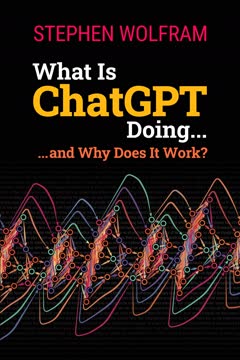

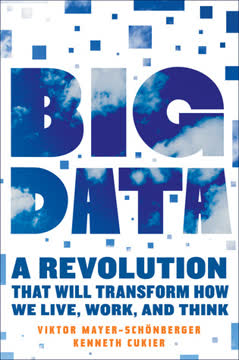

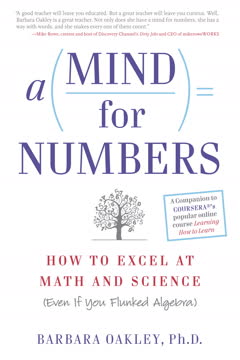
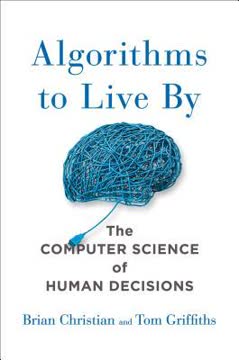
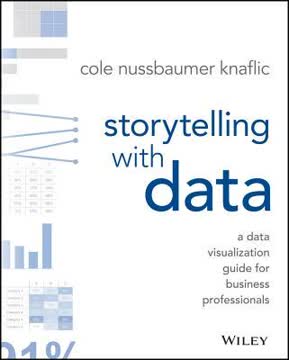


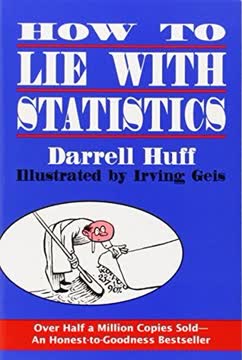
Download PDF
Download EPUB
.epub digital book format is ideal for reading ebooks on phones, tablets, and e-readers.
